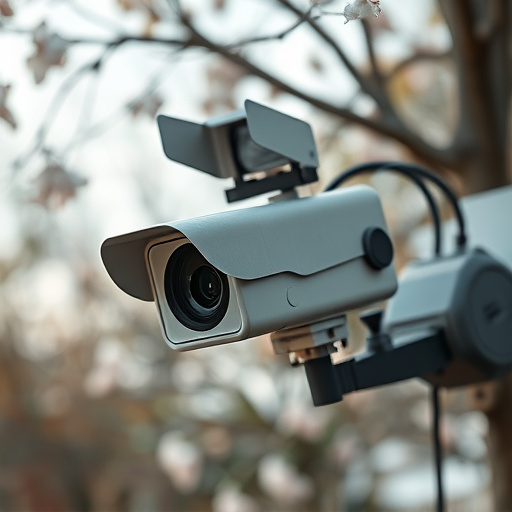Dummy security cameras create an illusion of surveillance, but their ability to deter crime is uncertain. While studies show mixed results, strategic placement and realistic design can make them effective visual deterrents. Balancing privacy concerns and local laws is crucial for responsible use in enhancing home security without infringing on rights.
“Uncover the power of mock surveillance systems—an innovative approach to crime deterrence. This comprehensive guide explores whether dummy cameras truly live up to their reputation as crime fighters. From understanding the technology behind these devices to choosing the perfect components, we demystify their installation and impact.
We delve into the science behind visual deterrence, offering practical tips for an effective setup. Additionally, this article navigates the legal and ethical terrain, ensuring responsible use of dummy cameras. By the end, you’ll question the myth of their crime-fighting capabilities.”
- Understanding Dummy Cameras: A Crime Deterrent Myth?
- Choosing the Right Mock Surveillance System Components
- Installation Tips for Effective Visual Deterrence
- Legal and Ethical Considerations: Using Dummy Cameras Responsibly
Understanding Dummy Cameras: A Crime Deterrent Myth?
Dummy security cameras, often mistaken for real surveillance systems, have sparked debates about their effectiveness as a crime deterrent. While some believe they significantly reduce criminal activity, others question their value beyond aesthetic or psychological benefits. The concept is simple: by mimicking actual cameras, these dummy devices aim to make potential criminals think they’re being watched, thus discouraging unlawful behavior.
However, the reality is not so straightforward. Studies have shown mixed results regarding their impact on crime rates. Criminals are often adept at recognizing fake cameras and may even view them as a challenge, planning their activities around these perceived obstacles. The psychological effect varies; some individuals might feel a brief sense of hesitation but quickly proceed with their intended actions. Therefore, while dummy cameras may create an illusion of security, their actual contribution to crime prevention remains questionable.
Choosing the Right Mock Surveillance System Components
When setting up a mock surveillance system, selecting the appropriate components is key. One crucial aspect to consider is the use of dummy security cameras, which serve as an effective deterrent against potential criminals. These realistic-looking cameras mimic real surveillance equipment, sending a clear message that your property is under watchful eyes. By strategically placing them in visible areas, you create an illusion of a fully operational security system, often discouraging unethical behavior.
Additionally, investing in high-quality mock surveillance components ensures the overall effectiveness of the system. This includes choosing durable and lifelike cameras with adjustable features to match various environments. Wireless connectivity and remote monitoring capabilities further enhance functionality, allowing you to manage and control the system easily. Remember, a well-designed mock surveillance setup can significantly contribute to enhancing security while providing peace of mind.
Installation Tips for Effective Visual Deterrence
Effective visual deterrence is a key aspect of any mock surveillance system, designed to discourage potential criminals and create a sense of security. When strategically placing dummy security cameras, consider high-traffic areas and visible spots where intruders might attempt to gain unauthorized access. Ensure these areas are well-lit, as bright lighting can act as a natural deterrent and make it harder for would-be criminals to remain unseen.
In addition to placement, the realistic appearance of the cameras is vital. Advanced technology has enabled the creation of highly convincing dummy cameras that closely mimic real security equipment. Opting for these life-like replicas can significantly enhance the system’s effectiveness, as genuine-looking cameras are more likely to deter criminals who aim to avoid detection.
Legal and Ethical Considerations: Using Dummy Cameras Responsibly
While dummy security cameras can be an effective visual deterrent, it’s crucial to approach their use responsibly, considering legal and ethical boundaries. Using fake cameras alone may not significantly deter crime; however, when integrated with real surveillance systems, they can act as a powerful off-putting measure for potential offenders. It’s essential to understand local laws regarding the installation of security cameras, especially in public spaces, to avoid any legal repercussions.
Ethically, transparent use is paramount. Locals should be informed about both real and dummy camera locations to ensure no misinformation or false sense of security is conveyed. Responsible implementation involves a balance between enhancing safety through visual deterrence and respecting privacy rights, ensuring that the use of dummy cameras aligns with ethical standards and community expectations.
While dummy security cameras may not directly prevent crime as their active counterparts do, they serve as an effective visual deterrent. By strategically installing a mock surveillance system, businesses and homeowners can significantly reduce the likelihood of theft or vandalism. Understanding the technology, selecting quality components, and addressing legal considerations are key to harnessing the full potential of this affordable security solution. Do dummy security cameras deter crime? Research suggests that their mere presence can act as a powerful psychological barrier, discouraging potential criminals from targeting monitored areas.
